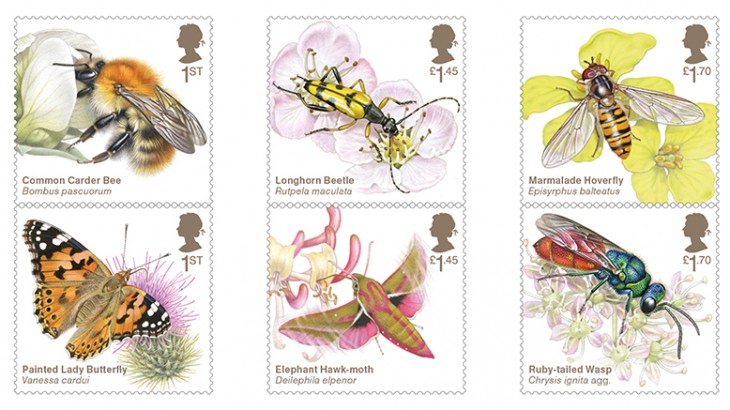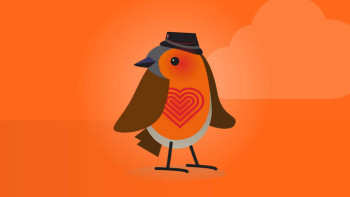It’s a bug’s life!

We have today launched a set of six stamps that celebrate the diversity, intrigue and importance of insects which pollinate plants in the UK.
The stamps explore insects - including bees and butterflies – and other often overlooked important pollinators, including moths, beetles, hoverflies and wasps.
Featured are six important insect pollinators feeding on flowers they typically visit: Common Carder Bee; Painted Lady Butterfly; Longhorn Beetle; Elephant Hawk-moth; Marmalade Hoverfly; and Ruby-tailed Wasp.
Pollinators are responsible for pollination of vast quantities of food crops for humans and farm animals and the pollination of wild plants including flowers and some trees. Of all plants worldwide, more than 85 per cent are pollinated by insects and other animals.
There are thought to be more than five million species of these ‘brilliant bugs’ worldwide.
Bees are the main pollinators in most ecosystems; there are over 20,000 species worldwide and more than 250 are found in the UK. Flies are considered the second most important group of pollinators; there are a staggering 120,000 species of fly worldwide. In addition to bees and flies, some species of butterfly, moth, wasp, beetle as well as thrip, are also considered important visitors to flowers.
There have been many reports that pollinating insects are undergoing significant declines around the world. Many reasons are given for these declines – from climate change to how we manage landscapes. A recent study in Britain showed that, over the last three decades, one third of bee and hoverfly species have declined.
To combat the declines, farmers around the world are putting flower-rich habitats back on the land they manage. Consequently, they are seeing an increase in the number of pollinating insects.
We can increase the numbers of flowers in urban landscapes by growing plants attractive to pollinating insects. There are many to choose from, including cowslips, bugle and heathers.
Vetches, dandelions, clovers and many of the flowers that appear in lawns also provide a rich source of nectar for pollinating insects – so patches of unmown lawn can be beneficial.
Royal Mail worked with ecologist and entomologist Professor Helen Roy MBE, from the UK Centre for Ecology & Hydrology, on the stamp set.
Professor Roy, said: ‘Insects are captivating, and I was delighted to be invited to join Royal Mail in celebrating insect pollinators.’
The stamps were illustrated by Oxfordshire-based, renowned wildlife artist, Richard Lewington, who said: ‘At a time when the plight of insects as pollinators has much been in the news, I was delighted to be commissioned by Royal Mail, to highlight the importance and incredible diversity of ‘Brilliant Bugs.’
Stamp strategy manager, Philip Parker, said: ‘Our exquisite new stamps depict colourful insects feeding on some of the flowers they frequent. We mark the vital role they play in pollinating wild flowers and crops: from bees and butterflies to the often-underappreciated work of hoverflies, moths, wasps and beetles.’
The stamps and a range of collectible products are available from today at: www.royalmail.com/brilliantbugs.



